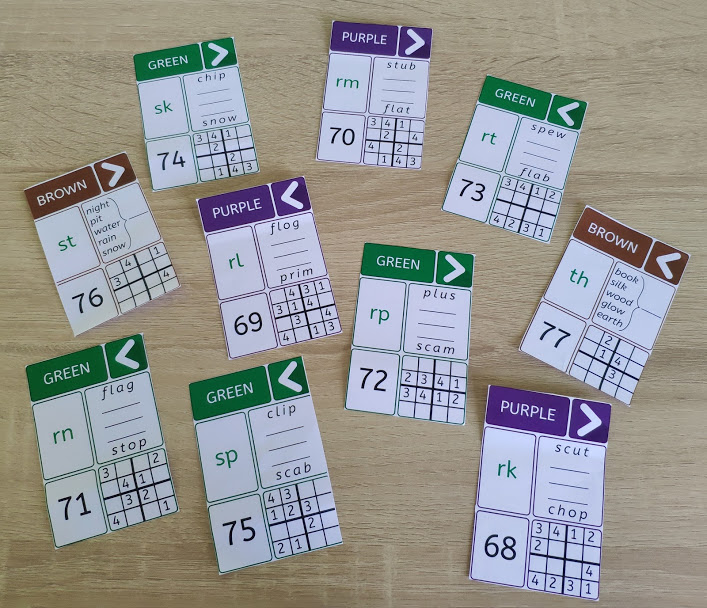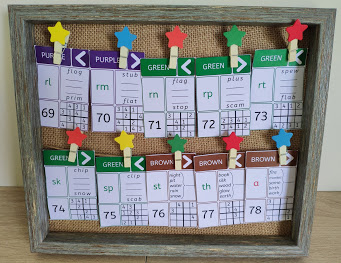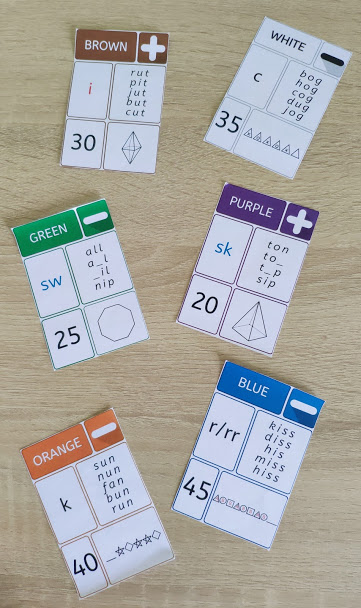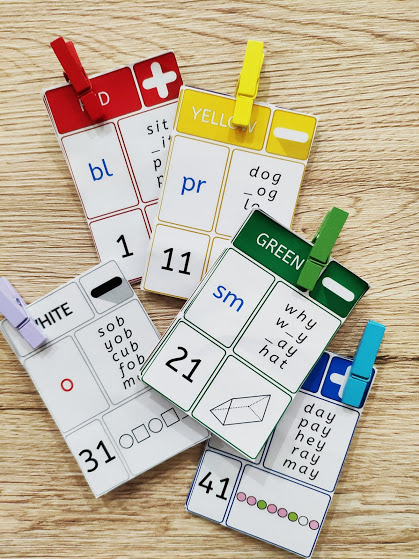CardEd, Mathematics
Sequencing Larger Numbers with CardEd (Includes FREE Download!)
In today’s post we consider sequencing numbers greater than 10.
Note:
CardEd sets 2 and 3 are the most useful when targeting larger numbers and are used in the activities below. As a reminder, CardEd sets 1 – 3 have the following numbers:
- Set 1: 1 – 10
- Set 2: 1 – 50
- Set 3: 51 – 100
Sequencing Numerals: Extending the Challenge
Once the child has mastered sequencing from 1 – 10 and 10 – 1, have them sequence numbers from a starting point other than 1.
Points to Consider:
- Can they sequence the teens numbers correctly?
- Is there any confusion sequencing 12 – 21? Can the child clearly discern 12 from 21?
Try sequences with larger, less familiar ranges e.g. 54 – 63 and 68 – 77, selecting about 10 CardEd cards in total to be sequenced from smallest to largest.

- In the case of 68 – 77, many children will start with 71 – 77 and then place 68, 69, 70 (as their focus is on the units place). Have the child count what they have made to check whether they are correct.

- Once confident with forward sequencing, have the child arrange the sequence backwards.
- Turn over a card from the sequence and ask the child to tell you which one is hidden.
- Ask the child to close their eyes and change the places of 2 numbers; can the child identify the change you made?
- For variety, ask the child to peg the cards onto a line. Can they do this from different starting points? Can they do this backwards? When given one card on the line, can they sequence the others around it?

Extensions:
Once children have mastered count by one sequences (forwards and backwards), other count sequences (2, 5, 10 etc.) can be introduced.


More Sequencing Activities
Before and After
Notes:
- This is an individual activity which lends itself well to station teaching sessions.
- It can be used to consolidate knowledge of sequencing 1 – 10 (CardEd Set 1) or larger numbers (CardEd Sets 2/3).
- It is easy to differentiate according to a child’s level – those working on numbers to 10 can work alongside children focusing on larger numbers.
- If children are working on larger numbers, we recommend creating sets of 20 cards.
- Print multiple copies of each CardEd set (on strong cardstock for durability) and arrange in sets of 10 or 20. We recommend storing sets of sequences (pinned together in sets of 10/20) in a labelled Ziploc bag.
- Print before and after grid templates and store with the cards. FREE download attached!


How to Play
- Each child must shuffle their cards (they can lay them upside-down on the table and mix them up if they are unable to shuffle).
- Select one card from the pile, read the number, and place it in the middle of the grid.
- Next, they must turn their cards over and find the number that goes before and after it.
- Shuffle remaining cards, choose one from the deck, and repeat the process.
- Read the sequences and check for errors.
Extensions:
- Have children place 2 cards before and 2 after cards.
- Have children place the numbers that go 2 / 5 / 10 places before and after.
- *If working with multiples of 5 / 10, each child will need their own deck of cards.


Human Number Line
How to Play
- Give each child a CardEd card (from a pre-selected sequence) and ask them to arrange themselves from smallest to biggest.
- Once they can successfully do this, try the same activity with a different set of numbers, but this time omit a number.
- Can they now figure out the sequence and identify the missing number?
- Can the children organise the sequence from largest to smallest?
5 in a Row
Notes:
- This activity can be played in pairs or in groups of 3 / 4 / 5.
- It can be used to consolidate knowledge of sequencing 1 – 10 (CardEd Set 1) or larger numbers (CardEd Sets 2/3).
- It is easy to differentiate according to a child’s level – those working on numbers to 10 can play alongside children working on larger numbers.
- Consider printing multiple copies of each CardEd set (on strong cardstock for durability), arranging them in sets of 10, and using this as a station activity in the classroom. We recommend storing sets of sequences (pinned in sets of 10) in a labelled Ziploc bag.
How to Play
- Give each child a sequence of cards
- Set 1: Each child gets 1 – 10
- Set 2: Sets = 1 – 10, 11 – 20, 21 – 30, 31 – 40, and 41 – 50.
- Set 3: Sets = 51 – 60, 61 – 70, 71 – 80, 81 – 90, and 91 – 100.
- Each child must shuffle their cards (they can lay them upside-down on the table and mix them up if they are unable to shuffle).
- Each player then places their cards in a pile and the youngest child says turn.
- All players turn over one card and place it in front of them.
- Going clockwise, the next player says turn and each child turns over a second card, placing it in relation to the first card on the table (before / after, leaving the space they estimate they need for other numbers).
- Going clockwise again, player 3 says turn, and the process is repeated.
- Object: Who can get 5 in a row in the fewest number of turns?
- A child with a sequence of 5 must call ‘5 in a row’ and read out the sequence they have made.
- Players can continue to play for 2nd and 3rd place etc. The winner simply continues and sees how far they can extend their sequence with each round.

Extensions:
- To make this activity more challenging, arrange the CardEd cards so that the sequences begin from numbers other than 1 e.g. 83 – 92.
The above activities contribute to the development of strong number sense, a necessary foundation for all later mathematical work.
